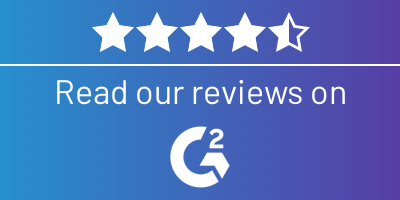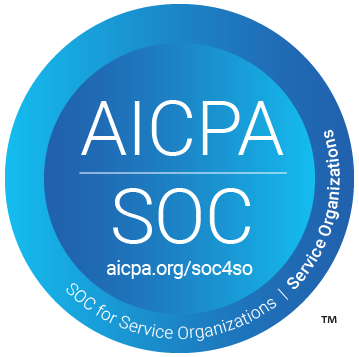Organizations that once questioned the importance of diversity, equity, and inclusion (DEI) can no longer ignore its benefits. With fear of falling behind, more companies are implementing diversity into their environmental, social, and corporate governance (ESG) to keep pace with forward-looking organizations leading the charge. This is because diversity plays a crucial role in shaping how companies operate, helping to shape the social and work environment. However, there is still some question as to whether or not leadership teams still understand the core challenges to be solved.
In our recent webinar, ESG & Diversity: A Roadmap to Inclusive Sustainability, industry experts Bindu Cudjoe, Caroline Codsi, and Sandeep Tatla discussed the landscape of sustainability, diversity, and equity in an inclusive workplace.
This core issue at play was summarized by Caroline Codsi, founder and chief equity officer of Women in Governance Canada. “The biggest issue that we have is that companies often use hashtags, pledges, and say things,” said Codsi, “When you scratch the surface, you realize that they’re just buzzwords they’ve been using.”

In Canada, of all the publicly traded companies, the Canadian Securities Administrators (CSA) reported that only 27% of board seats are currently held by women. While there is more to diversity, equity, and inclusion (DEI) than statistical composition, these numbers illustrate the inequity within organizations, and the need to implement more equitable opportunities. Codsi elaborates further, “If you are serious about wanting to close the gap, whatever gap you’re trying to close, you’ll need to understand its magnitude, its root causes, and where exactly these gaps are in the organization, otherwise you’re going at it blindly.”
By understanding the intersection of ESG and diversity, we gain valuable insights into navigating this evolving landscape of sustainability and equity and move towards methods to develop a more diverse and inclusive work environment.
If you missed the live webinar, we have compiled five key takeaways from the discussion.
1. Diversity is More than an HR Initiative
There is more to diversity than an HR department hiring various people. Diversity should be present throughout your organization’s overall strategy.
As Sandeep Tatla, chief equity, diversity, and inclusion officer at Fasken, describes, “There’s a misnomer that diversity is just something that HR or the people functions need to worry about. Where it actually belongs is that it should be part of that organizational strategy. It should be an enabler of all the goals you have set out for your organization. You should be thinking about how diversity can help you achieve those goals.” The inclusion of a variety of perspectives and voices can influence and strengthen your organization’s decision-making in many aspects.
Marketing, product development, business development, and client success, to name just a few, are departments that benefit from a better understanding of diversity. It gives you deeper insights into your consumers by acknowledging the different ways people think, act, and engage with your product. Moreover, diversity reframes how you approach decisions about your product, how you position your marketing campaigns, and how you build lasting relationships with consumers. This shift in your approach can also extend to how different employees engage with one another and work together within a team.
2. Diversity is Not Social Justice
While many businesses want to incorporate diversity within their workforce, it is equally important to do so with purpose. Making decisions to hire more women or hire more people of different ethnicities solely to meet KPIs and diversity metrics loses sight of the true intention of diversity efforts. A benefit of employing diverse candidates within your organization is that each of them brings unique value that can complement and enrich existing perspectives.
Diversity can also positively impact a business’s success through the combination of various perspectives. Caroline Codsi perfectly summarizes this, “More diversity equals better employee engagement, equals more innovation, equals more different perspectives, more ideas that come to the table, more robust decision-making, and at the end of the day, that’s going to impact the bottom line.”
By engaging with people’s lived experiences, you learn more about who they are and their motivations for why they do or say the things they do. In turn, by fostering a culture of diversity in the workplace, we can better develop our relationships between our co-workers and our consumers.

3. The Advantages of a Diverse Team
In many industries, such as legal and finance, building relationships serves as the basis of operations and reputation. A study by Nature Portfolio shows that building relationships with those who are similar to us tends to be easier, but such a status quo can result in bias, conscious or unconscious, which can lead to corporate homogeneity.
McKinsey’s fourth Diversity Matters report found evidence that companies that scored in the top quartile for gender-diverse and ethnically diverse boards are 27% and 13%, respectively, more likely to outperform those in the bottom quartile.
Diverse teams are simply smarter. According to an article published in the Harvard Business Review, diverse teams are more likely to focus more on facts, process information more accurately, and be more innovative. To this end, it is imperative to establish inclusive practices within your organization to ensure that individuals feel empowered to express their perspectives. Prioritizing diversity not only contributes to the intellectual performance of your teams but also leads to the overall success of your organization.
Cultivating a more diverse workplace serves as a mechanism to mitigate inherent biases among team members, encouraging them to critically evaluate their preconceptions, which leads to improved productivity and, ultimately, better financial performance.
4. Changing the Workplace Culture
One of the objectives of ESG is to build a sustainable work environment that enhances and optimizes conditions for the people who work there. Fostering equal opportunities for employees and developing an inclusive work environment can lead to greater team engagement.
In their discussion, our panel agreed that with the right environment, team members can feel more empowered to deliver more on projects. “Employees and teams that feel included, they deliver more and it’s as selfish and as simple as that,” said Bindu Cudjoe, chief inclusion and equity officer for Laurention Bank, “We spend most of our day working with our colleagues and if you actually have an environment where you feel you can contribute and you feel valued, you’ll always put a lot of passion into that. I think that drives business success.”
Workplace culture is a crucial element that needs to incorporate and encourage diversity. From the C-suite of the organization to the junior level, it is important to establish an inclusive culture in which employees feel comfortable and accepted. This can be done through various initiatives that help support employee empowerment across the organization. Equity, at its core, is rooted in removing barriers in order to enable all employees to succeed. In pursuit of equity, equal opportunities should be given to any individual within the organization who is qualified to be considered.
5. Communication is Key
While conversations about privilege, biases, and underrepresentation can be uncomfortable, they must not be avoided. It is important to have the courage to host open and constructive dialogues about these topics, which will ultimately help your company succeed in applying ESG principles throughout your organization.
An important part of inclusion is the practice of ensuring that all individuals feel valued and respected. Employee feedback can serve as your best source of information for implementing significant change to meaningfully support them. Conducting employee surveys and reporting forms is one effective method to encourage feedback from employees while providing the organization as a whole with assessment opportunities for improvement.
From an organizational standpoint, opening the lines of communication allows individuals to feel more included in the overall decision-making process. Not only does it allow them to voice their concerns, but it also makes them feel heard, and that their opinion is valued.
Conclusion
ESG and diversity discussions are rooted in the belief that individuals, regardless of their gender, race, or sexual orientation, should feel empowered to hold any position for which they are qualified and to be given equal opportunity to do so.
An organization’s ESG strategy should consider the role of equity, diversity, and inclusion in better understanding and strategizing how to enhance your organization's bottom line, while also fostering a diverse and inclusive workplace.
As a trusted translation service provider, Alexa Translations understands the importance of bringing people together and fostering human connection by breaking language barriers.
Get in touch today to find out how we can provide translation services to help you work toward a future as a better-connected and inclusive organization.














